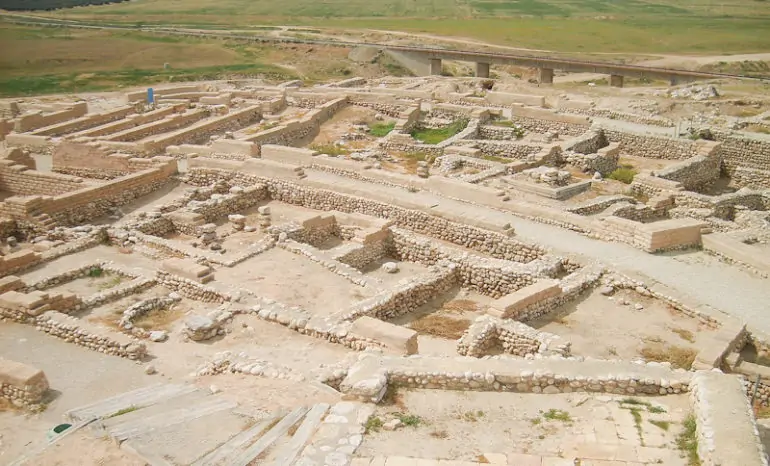
Tel Be’er Sheva is a Biblical Tel near the modern-day city of Beersheba in the Negev region of Israel. It is believed by archaeologists to be the remains of the Iron Age city of Beersheba. The Tel was restored and preserved by the Israel Nature and Parks Authority in 1990. Visitors can visit the Tel Be’er Sheva National Park, designated as a UNESCO World Heritage Site for its cultural and historical significance in 2007. It is considered the most representative of all the biblical tels in Israel due to its large quantity of remains.
The ancient biblical site of Beersheba lies approximately two and a half miles from the modern city of the same name. The remnants of the city tell us the streets of Beersheba were laid out in a grid formation with separate areas for administrative buildings, commercial, military, and residential use. A set of large circular stairs leads down to a complex underground water system with a huge rock-carved cisterns beneath the town. Other remains include a four-room house, a pillared building used for stables and the first horned altar found in Israel.
Horned Altar
The most significant discovery found at Tel Be’er Sheva was the first horned altar ever to be discovered in the country. The altar has horns at each of its four corners. This very type of altar was mentioned in the Bible in the following passages:
Leviticus 4:7 – “The priest shall then put some of the blood on the horns of the altar of fragrant incense that is before the Lord in the tent of meeting. The rest of the bull’s blood he shall pour out at the base of the altar of burnt offering at the entrance to the tent of meeting.”
Exodus 29:12 – “Take some of the bull’s blood and put it on the horns of the altar with your finger and pour out the rest of it at the base of the altar.”
1 Kings 1:50 – “But Adonijah, in fear of Solomon, went and took hold of the horns of the altar.”

Cistern Engravings
Recently the engravings of 13 sea vessels and a sailor were discovered etched into a cistern’s wall in Beersheba. The cistern is approximately 40 feet deep. Scholars say the technique of hewing and plastering of the cistern suggest it dates to the 1st or 2nd century AD.
Beersheba in the Bible
The Hebrew word be’er means “well” and sheva means “oath”. This is the location where Abraham, the Patriarch of Israel, & Abimelech, the ruler of the Philistines in Gerar, made a treaty with one another (Genesis 21:32) , where Abraham & Isaac dug wells, Isaac built an altar (Genesis 26:25) and Jacob after leaving Beersheba dreamt of a ladder reaching up to heaven (Genesis 28:10-20).
Learn about other UNESCO World Heritage sites in Israel:
Tentative UNESCO World Heritage Sites:
Coral Travel & Tours is dedicated to creating an Israel experience catered to the needs of each tour group that travels with us. It is our privilege to introduce you to the Holy Land. We hope to see you in Israel!
Pastors’ Guide to Israel Tour Planning
Photos by By gugganij – Own work, CC BY-SA 3.0, https://commons.wikimedia.org/w/index.php?curid=2346800
